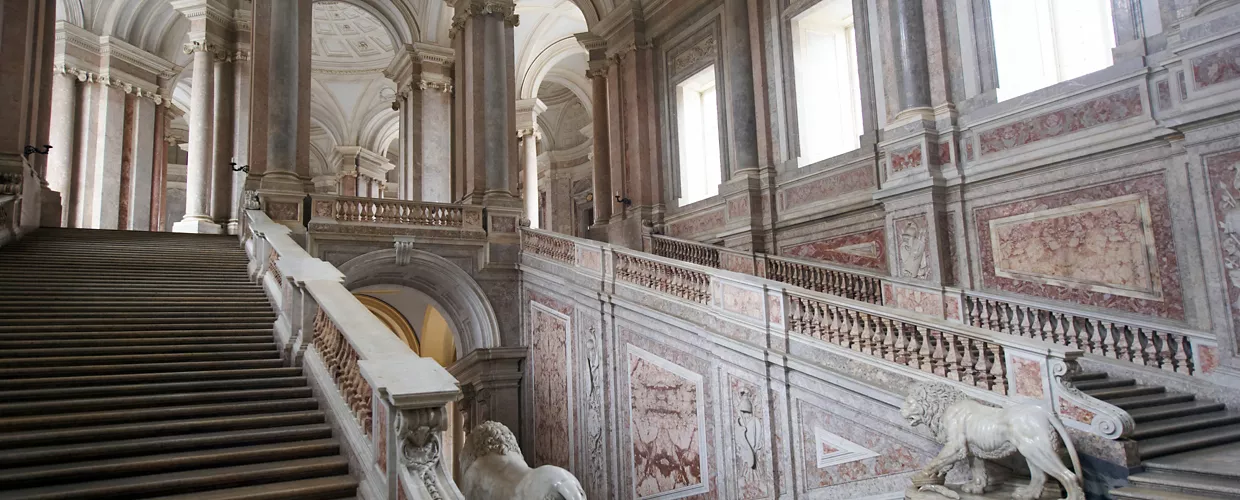

Overview
Entire books have been written about the role played by the Royal Palace of Caserta in the history of art and architecture – but perhaps not everything has yet been said. This masterpiece, designed by the architect Luigi Vanvitelli, is so large and grandiose that words alone are not enough.
The Palace of Caserta, listed by UNESCO as a World Heritage Site, undoubtedly rivals the largest royal residences in Europe, in terms of its beauty and historic value. From 1752, the year in which King Charles of Bourbon acquired the land on which the palace now stands, the construction and decoration of the building continued without interruption for almost a century. The five-storey royal palace is set around four large internal courtyards and has three magnificent entrance lobbies. Inside, there are countless halls and rooms filled with priceless antique furnishings, while the walls are lined with friezes and frescoes.
The surroundings of the palace (and the superhuman efforts that made it possible) are in some ways even more unexpected. Vanvitelli used the slight gradient of the terrain to good advantage, building an aqueduct almost 40 km long, to supply the various lakes and water features dotted around the royal gardens. The park of the royal palace of Caserta extends for about three kilometres along a central avenue, with stunning visuals.